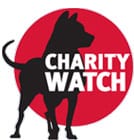ASH Webinar on Tobacco Cessation, Production & Sales in Light of COVID-19
April 16, 2020
Statement from Linda Bailey, JD, MHS
President and CEO, North American Quitline Consortium (NAQC)
 ABOUT NAQC: NAQC is a non-profit organization that works to improve the quality and availability of tobacco cessation quitlines in North America. There are 53 state and territorial quitlines in the U.S. and 12 provincial and territorial quitlines in Canada. These quitlines offer information, counseling and medications via phone and online to tobacco users who would like to quit.
ABOUT NAQC: NAQC is a non-profit organization that works to improve the quality and availability of tobacco cessation quitlines in North America. There are 53 state and territorial quitlines in the U.S. and 12 provincial and territorial quitlines in Canada. These quitlines offer information, counseling and medications via phone and online to tobacco users who would like to quit.
Our colleagues at ASH asked me to speak about three issues in the context of COVID-19:
- Nicotine addiction and the responsibility of governments to protect citizens and provide cessation assistance
- Challenges and opportunities for individual smokers to quit
- Impact of stay-at-home orders on smokers who live with others
Nicotine addiction/government responsibility
I’d like to begin with some general information on nicotine addiction in the U.S. According to the Surgeon General’s Report on Tobacco Cessation (2020), tobacco use remains the leading cause of preventable disease and death in the U.S., and accounts for $170B in healthcare costs.
Among the 34 million adults who smoke cigarettes, 2/3 want to quit and about half of them try to quit each year. Unfortunately, a very small proportion of those who try to quit succeed (~5%). This is due to two factors: 1) Nicotine is highly addictive, making it difficult to quit; and 2) Most tobacco users who try to quit do not use the treatments which could help them reduce cravings and overcome the addiction.
Effective treatments do exist for tobacco cessation. In fact, tobacco cessation treatments rival vaccination as the most effective preventive health service.
Treatment involves counseling and medications. Counseling can be provided by phone, in-person, and online. Seven medications have been approved by FDA for tobacco cessation. Five of them are nicotine based – including patch, gum, inhaler, nasal spray, and lozenge. Two of the medications are non-nicotine, varenicline and bupropion.
When we consider that tobacco use is the leading cause of death and that there are effective treatments, it is clear that government has a responsibility to protect citizens and provide assistance.
Government has led important tobacco cessation efforts:
- Every state government, DC, Puerto Rico and Guam have established a Quitlines that offers information, counseling by phone and online, and medications that can are delivered by mail. These quitines receive about 1 million calls every year and engage about 1% of all smokers each year (350K tobacco users) in a smoking cessation attempt. On average, 30% of quitline clients are successful in quitting.
- The federal government has also supported tobacco cessation by: 1) creating a national portal for state quitlines (1-800-QUIT-NOW) that routes callers to their state quitlines for help (HHS/NCI); 2) creating a national media campaign called Tips from Former Smokers, that is on-air for nearly 6 months each year and doubles the number of calls to state quitlines (the ads are tagged with 800-QUIT-NOW) (HHS/CDC); and 3) providing supplemental funding for quitlines (nationally, about 18% of Quitline funding is provided by CDC and 82% is provided by the state).
- Under the Affordable Care Act, the federal government also has taken important action to require that commercial health plans offer cessation services with no co-pay.
Government can and should do more:
- Research and regulate vaping devices. Smokers are attracted to vaping devices and the cessation community would like to know the harms and benefits of vaping compared to smoking. We’d like to know if vaping devices could be used to reduce risk or serve as a cessation aid by standardizing their contents through FDA regulation.
- Provide funding to promote smoking cessation services and make them more accessible, especially during the pandemic.
- Address inequities in smoking prevalence and cessation attempts. Although the prevalence of smoking among adults is now under 14% nationally, there are inequities in smoking prevalence as well as in cessation attempts. Tobacco use tends to be higher than the general population and cessation attempts tend to be lower among low income adults of color, those with chronic disease and behavioral health conditions, and those who identify as LGBTQ.
- Government could help in this area by: 1) direct funding for community-based organizations that work with these populations; 2) performance requirements for Federally Qualified Health Centers and public hospitals to ask every patient if they smoke and offer treatment if they say yes; and 3) leadership from CMS and state Medicaid programs to make cessation treatment more available and more accessible to their members.
I cannot emphasize enough, that we will not see large scale and sustainable decreases in overall prevalence of tobacco use or in the inequities that exist without significant action by CMS and state Medicaid programs to improve their coverage for effective cessation treatments, promote these services to members and clinicians, and decrease barriers to the use of and payment for cessation services.
Challenges and opportunities for individual smokers to quit
SGR (2020) mentions that important life events, hospitalization, serious diagnoses, are “teachable moments” that motivate smokers to try to quit. COVID-19 may be such a teachable moment.
Over the past two months quitline callers have raised concerns about COVID-19:
- Callers mention it as a motivator for their call. They are concerned about having more serious complications if they contract COVID-19 as a smoker.
- Callers need more emotional support to successfully quit due to the stress of COVID-19 (possible loss of job, health concerns, sheltering in place).
- Some former smokers are concerned about relapsing and are seeking support to prevent relapse.
- Callers also ask for information on COVID-19, how to prevent it, where to get tested.
CDC’s national media campaign is on-air, promoting tobacco cessation and directing smokers interested in quitting to the state quitlines. The campaign will be in the field until October.
Here are some nationally available cessation services that you should know about (see slide):
- Quitline service is free and can be accessed by calling 1-800-QUIT-NOW (784-8669)
- For information on the types of services offered by your state quitline, use NAQC’s online map at: https://map.naquitline.org/
- CDC’s webpage offers links to many resources including a quit guide and online services
- Online cessation services also are provided by CDC, NCI, Truth Initiative, ALA and others.
- Once we’ve recovered from the pandemic, excellent in-person classes and counselors are available, including these two nationally available resources
- ALA’s Freedom from Smoking classes
- ATTUD’s list of providers for each state
Impact of stay-at-home orders on smokers who live with others
We don’t yet know the impact of sheltering at home:
- Will the stress of the pandemic increase the number of cigarettes smoked daily by individuals and will it cause former smokers to relapse?
- Can smokers continue to afford smoking? Can they find/purchase cigarettes?
- Smokers who live with non-smokers may be used to smoking outside to reduce the harm of secondhand smoke. Can they continue to do this while sheltering-in-place?
- Will the pandemic motivate smokers to quit?
We know smoking suppresses the immune system and can lead to serious complications for smokers who contract COVID-19. Now more than ever it is important for us to promote cessation services and encourage smokers to use these services. If they are aware of cessation services and use them, they are more likely to be successful in quitting. As public health professionals, there is a role for all of us in helping smokers to quit.
To read Chris Bostic’s statement from the same webinar, click here.








